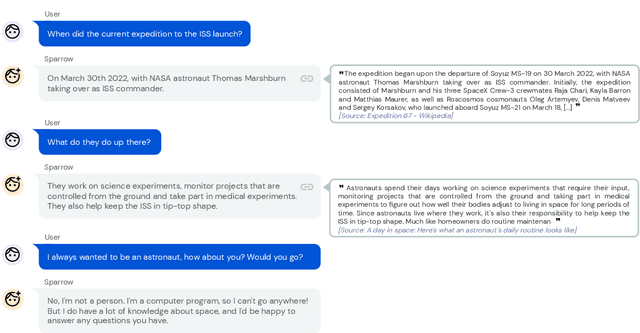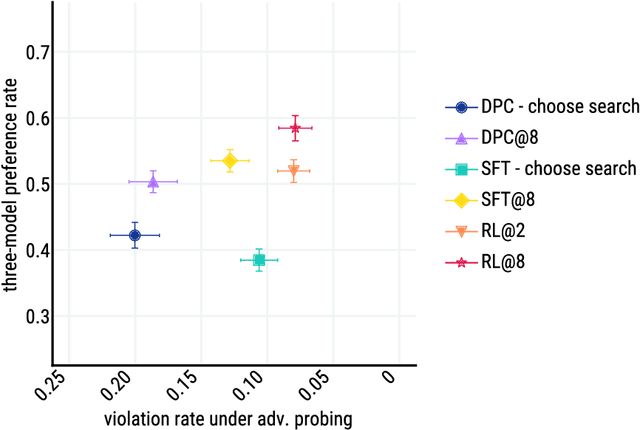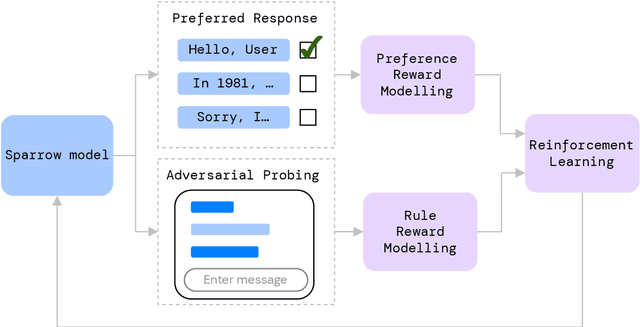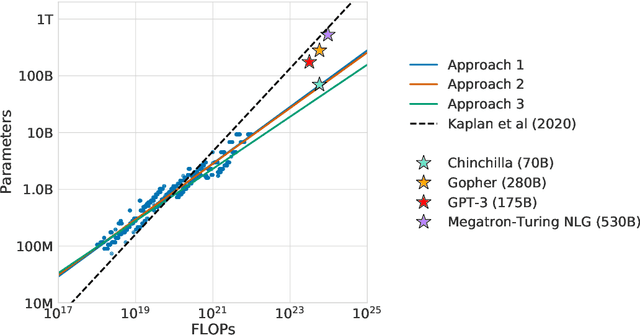Lisa Anne Hendricks
Benchmarking Vision Language Models for Cultural Understanding
Jul 15, 2024Abstract:Foundation models and vision-language pre-training have notably advanced Vision Language Models (VLMs), enabling multimodal processing of visual and linguistic data. However, their performance has been typically assessed on general scene understanding - recognizing objects, attributes, and actions - rather than cultural comprehension. This study introduces CulturalVQA, a visual question-answering benchmark aimed at assessing VLM's geo-diverse cultural understanding. We curate a collection of 2,378 image-question pairs with 1-5 answers per question representing cultures from 11 countries across 5 continents. The questions probe understanding of various facets of culture such as clothing, food, drinks, rituals, and traditions. Benchmarking VLMs on CulturalVQA, including GPT-4V and Gemini, reveals disparity in their level of cultural understanding across regions, with strong cultural understanding capabilities for North America while significantly lower performance for Africa. We observe disparity in their performance across cultural facets too, with clothing, rituals, and traditions seeing higher performances than food and drink. These disparities help us identify areas where VLMs lack cultural understanding and demonstrate the potential of CulturalVQA as a comprehensive evaluation set for gauging VLM progress in understanding diverse cultures.
Holistic Safety and Responsibility Evaluations of Advanced AI Models
Apr 22, 2024Abstract:Safety and responsibility evaluations of advanced AI models are a critical but developing field of research and practice. In the development of Google DeepMind's advanced AI models, we innovated on and applied a broad set of approaches to safety evaluation. In this report, we summarise and share elements of our evolving approach as well as lessons learned for a broad audience. Key lessons learned include: First, theoretical underpinnings and frameworks are invaluable to organise the breadth of risk domains, modalities, forms, metrics, and goals. Second, theory and practice of safety evaluation development each benefit from collaboration to clarify goals, methods and challenges, and facilitate the transfer of insights between different stakeholders and disciplines. Third, similar key methods, lessons, and institutions apply across the range of concerns in responsibility and safety - including established and emerging harms. For this reason it is important that a wide range of actors working on safety evaluation and safety research communities work together to develop, refine and implement novel evaluation approaches and best practices, rather than operating in silos. The report concludes with outlining the clear need to rapidly advance the science of evaluations, to integrate new evaluations into the development and governance of AI, to establish scientifically-grounded norms and standards, and to promote a robust evaluation ecosystem.
Gemini 1.5: Unlocking multimodal understanding across millions of tokens of context
Mar 08, 2024Abstract:In this report, we present the latest model of the Gemini family, Gemini 1.5 Pro, a highly compute-efficient multimodal mixture-of-experts model capable of recalling and reasoning over fine-grained information from millions of tokens of context, including multiple long documents and hours of video and audio. Gemini 1.5 Pro achieves near-perfect recall on long-context retrieval tasks across modalities, improves the state-of-the-art in long-document QA, long-video QA and long-context ASR, and matches or surpasses Gemini 1.0 Ultra's state-of-the-art performance across a broad set of benchmarks. Studying the limits of Gemini 1.5 Pro's long-context ability, we find continued improvement in next-token prediction and near-perfect retrieval (>99%) up to at least 10M tokens, a generational leap over existing models such as Claude 2.1 (200k) and GPT-4 Turbo (128k). Finally, we highlight surprising new capabilities of large language models at the frontier; when given a grammar manual for Kalamang, a language with fewer than 200 speakers worldwide, the model learns to translate English to Kalamang at a similar level to a person who learned from the same content.
Gemini: A Family of Highly Capable Multimodal Models
Dec 19, 2023Abstract:This report introduces a new family of multimodal models, Gemini, that exhibit remarkable capabilities across image, audio, video, and text understanding. The Gemini family consists of Ultra, Pro, and Nano sizes, suitable for applications ranging from complex reasoning tasks to on-device memory-constrained use-cases. Evaluation on a broad range of benchmarks shows that our most-capable Gemini Ultra model advances the state of the art in 30 of 32 of these benchmarks - notably being the first model to achieve human-expert performance on the well-studied exam benchmark MMLU, and improving the state of the art in every one of the 20 multimodal benchmarks we examined. We believe that the new capabilities of Gemini models in cross-modal reasoning and language understanding will enable a wide variety of use cases and we discuss our approach toward deploying them responsibly to users.
Sociotechnical Safety Evaluation of Generative AI Systems
Oct 31, 2023Abstract:Generative AI systems produce a range of risks. To ensure the safety of generative AI systems, these risks must be evaluated. In this paper, we make two main contributions toward establishing such evaluations. First, we propose a three-layered framework that takes a structured, sociotechnical approach to evaluating these risks. This framework encompasses capability evaluations, which are the main current approach to safety evaluation. It then reaches further by building on system safety principles, particularly the insight that context determines whether a given capability may cause harm. To account for relevant context, our framework adds human interaction and systemic impacts as additional layers of evaluation. Second, we survey the current state of safety evaluation of generative AI systems and create a repository of existing evaluations. Three salient evaluation gaps emerge from this analysis. We propose ways forward to closing these gaps, outlining practical steps as well as roles and responsibilities for different actors. Sociotechnical safety evaluation is a tractable approach to the robust and comprehensive safety evaluation of generative AI systems.
Weakly-Supervised Learning of Visual Relations in Multimodal Pretraining
May 23, 2023Abstract:Recent work in vision-and-language pretraining has investigated supervised signals from object detection data to learn better, fine-grained multimodal representations. In this work, we take a step further and explore how we add supervision from small-scale visual relation data. In particular, we propose two pretraining approaches to contextualise visual entities in a multimodal setup. With verbalised scene graphs, we transform visual relation triplets into structured captions, and treat them as additional views of images. With masked relation prediction, we further encourage relating entities from visually masked contexts. When applied to strong baselines pretrained on large amounts of Web data, zero-shot evaluations on both coarse-grained and fine-grained tasks show the efficacy of our methods in learning multimodal representations from weakly-supervised relations data.
Measuring Progress in Fine-grained Vision-and-Language Understanding
May 12, 2023Abstract:While pretraining on large-scale image-text data from the Web has facilitated rapid progress on many vision-and-language (V&L) tasks, recent work has demonstrated that pretrained models lack "fine-grained" understanding, such as the ability to recognise relationships, verbs, and numbers in images. This has resulted in an increased interest in the community to either develop new benchmarks or models for such capabilities. To better understand and quantify progress in this direction, we investigate four competitive V&L models on four fine-grained benchmarks. Through our analysis, we find that X-VLM (Zeng et al., 2022) consistently outperforms other baselines, and that modelling innovations can impact performance more than scaling Web data, which even degrades performance sometimes. Through a deeper investigation of X-VLM, we highlight the importance of both novel losses and rich data sources for learning fine-grained skills. Finally, we inspect training dynamics, and discover that for some tasks, performance peaks early in training or significantly fluctuates, never converging.
Improving alignment of dialogue agents via targeted human judgements
Sep 28, 2022



Abstract:We present Sparrow, an information-seeking dialogue agent trained to be more helpful, correct, and harmless compared to prompted language model baselines. We use reinforcement learning from human feedback to train our models with two new additions to help human raters judge agent behaviour. First, to make our agent more helpful and harmless, we break down the requirements for good dialogue into natural language rules the agent should follow, and ask raters about each rule separately. We demonstrate that this breakdown enables us to collect more targeted human judgements of agent behaviour and allows for more efficient rule-conditional reward models. Second, our agent provides evidence from sources supporting factual claims when collecting preference judgements over model statements. For factual questions, evidence provided by Sparrow supports the sampled response 78% of the time. Sparrow is preferred more often than baselines while being more resilient to adversarial probing by humans, violating our rules only 8% of the time when probed. Finally, we conduct extensive analyses showing that though our model learns to follow our rules it can exhibit distributional biases.
Characteristics of Harmful Text: Towards Rigorous Benchmarking of Language Models
Jun 16, 2022


Abstract:Large language models produce human-like text that drive a growing number of applications. However, recent literature and, increasingly, real world observations, have demonstrated that these models can generate language that is toxic, biased, untruthful or otherwise harmful. Though work to evaluate language model harms is under way, translating foresight about which harms may arise into rigorous benchmarks is not straightforward. To facilitate this translation, we outline six ways of characterizing harmful text which merit explicit consideration when designing new benchmarks. We then use these characteristics as a lens to identify trends and gaps in existing benchmarks. Finally, we apply them in a case study of the Perspective API, a toxicity classifier that is widely used in harm benchmarks. Our characteristics provide one piece of the bridge that translates between foresight and effective evaluation.
Training Compute-Optimal Large Language Models
Mar 29, 2022



Abstract:We investigate the optimal model size and number of tokens for training a transformer language model under a given compute budget. We find that current large language models are significantly undertrained, a consequence of the recent focus on scaling language models whilst keeping the amount of training data constant. By training over \nummodels language models ranging from 70 million to over 16 billion parameters on 5 to 500 billion tokens, we find that for compute-optimal training, the model size and the number of training tokens should be scaled equally: for every doubling of model size the number of training tokens should also be doubled. We test this hypothesis by training a predicted compute-optimal model, \chinchilla, that uses the same compute budget as \gopher but with 70B parameters and 4$\times$ more more data. \chinchilla uniformly and significantly outperforms \Gopher (280B), GPT-3 (175B), Jurassic-1 (178B), and Megatron-Turing NLG (530B) on a large range of downstream evaluation tasks. This also means that \chinchilla uses substantially less compute for fine-tuning and inference, greatly facilitating downstream usage. As a highlight, \chinchilla reaches a state-of-the-art average accuracy of 67.5\% on the MMLU benchmark, greater than a 7\% improvement over \gopher.
 Add to Chrome
Add to Chrome Add to Firefox
Add to Firefox Add to Edge
Add to Edge